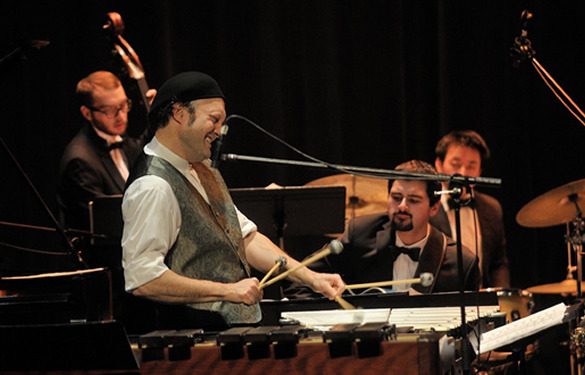Three Things You Can Do to Help Your Mallet Players
By Arthur Lipner
Hi everyone! In my travels around the world as a mallet clinician and guest artist I’m constantly asked the same question: what can we do to improve our mallet program?
Here are three actionable items which will help right away:
1) Have student utilize the same two-stick grip for basic technique and sound production. (snare drum possible exception) Why?
a. Practicing one percussion instrument in the reach towards mastery leads to success on all others. This one-grip concept makes it easier for students to approach and enjoy less familiar instruments.
b. Learning the touch of how different surfaces respond helps students’ general sense of timing.
c. Playing other percussion instruments opens ears to different sound colors which, in turn, can help students along the path of self-improvement. Quality and depth of tone, critical across the percussion family, may be new concepts to some but they will bring forth great dividends to all.
2) Percussionists should read melodies at the same level as brass and winds. Percussionists have an advantage over other instrumentalists given deeper experience with rhythms and timing, but also commonly a disadvantage due to the likely later exposure in their studies to pitch reading. We all know that pitches and harmony are the true gateways to rounded musicianship. Better pitch-reading will help break down any separation which may exist between percussionists and other instrumentalists in your ensembles. Another pointer: developing peripheral vision is a critical skill in mallet playing. Help students along as they try to see the surface of keyboard instruments while also seeing their music and director.
3) Tell feeder schools that mallet percussion must start Day One. I’ve never met a drummer of any age who wished she/he didn’t have more pitch-reading abilities. When I show HS drummers – even college orchestral players! – a simple melody such as “Levitating,” big smiles of joy and enlightenment always follow. Quickly demonstrate that melody to percussionists, or even your whole band. In E minor, the first note is B going down the scale B- A-G-F#-E-D-E. Easy…with guaranteed results!
Hope you find the above helpful. Happy to hear from you with any questions/feedback via arthurlipnermusic@gmail.com
Arthur Lipner specializes in vibes, marimba and steel pans. He has appeared on over 50 albums and presented 300+ workshops on six continents, teaching at some of the world’s most prestigious schools including Juilliard and the Royal College of Music. Lipner's compositions and albums are considered important stepping stones in furthering the literature and musical settings for his instruments. Arthur has written numerous method books and compositions/arrangements which have become standard works in percussion. He has many credits as an active NYC session player for a variety of media. Lipner is the main character in the documentary TALKING STICKS. Arthur has toured overseas nearly 100 overseas times, most recently in China & Russia (2019).


